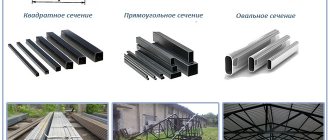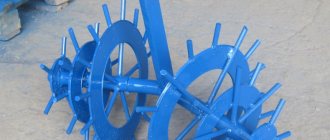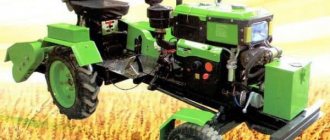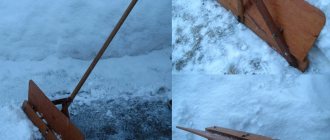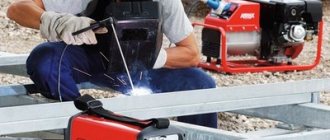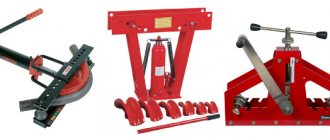Often, alteration of a walk-behind tractor is carried out in cases where the operational characteristics of the unit, functionality and ease of operation no longer satisfy the owner of the equipment. In some cases, individual craftsmen tune a walk-behind tractor to realize their visual fantasies or to impress others. Today, almost every private house and summer cottage has a walk-behind tractor or a walk-behind cultivator. However, the capabilities of this technique are limited. To expand the functionality of walk-behind tractors, you can contact a specialized workshop, but the price of such conversion can be very high. There are several ways to inexpensively and practically upgrade a walk-behind tractor with your own hands.
How to remake a walk-behind tractor
Many owners want to improve their walk-behind tractor to improve comfort during work. The most common modifications are the manufacture of adapters and trailers. This upgrade allows you to expand the functionality of the walk-behind tractor, because the adapter allows you not only to transport various loads, but also to use the walk-behind tractor as a vehicle.
Improving the walk-behind tractor will allow you to create a whole mini-tractor. Adapters and trailers can have their own steering, which is much more convenient than using a steering wheel from a walk-behind tractor. There are many step-by-step photo instructions and videos showing how to create a trailer. One of the most important elements of such a device is the frame, which is made of channel or pipes. Wheels can be taken from any car; the ideal option is wheels from an ATV. Bridges can be taken from VAZ 21-09, they need to be shortened. The steering column can be taken from the same car. The driver's seat will allow you to work with maximum comfort.
In addition, a mini-excavator can be made from a walk-behind tractor, the creation of which requires a hydraulic system. Such an excavator is very convenient for construction on a personal plot, because it is compact and can go where heavy equipment cannot.
External tuning of the unit
Structurally, light, medium and heavy walk-behind tractors are practically the same. They consist of a power plant, chassis and controls. The operator resembles an ancient plowman, holding the handles of the machine with both hands. However, it is not protected from sunlight, rain, snow and heat coming from the engine. To create additional comfort, you do not need to spend additional money. Everything you need is at hand. External modernization of a walk-behind tractor involves the installation of a removable or permanent awning, an additional protective casing or hood over the power plant.
To work you will need:
- roulette;
- building level;
- Bulgarian;
- welding machine;
- electric drill;
- set of wrenches;
- steel or aluminum corner 30 x 30 mm;
- paint brush;
- acrylic paint;
- tarpaulin or cellular polycarbonate;
- flexible plastic.
External modification of the walk-behind tractor is carried out in the following sequence:
- Drawing up drawings. It is necessary to accurately calculate all dimensions of the frame and provide options for attaching it to the frame and handles.
- Carrying out markings, cutting out blanks for the awning, casing, wings and hood.
- Welding a frame from a corner. Drilling mounting holes, cleaning metal from rust, oil and dirt. Painting of the manufactured structure.
- Fitting the frame onto the frame. Marking and making holes in it. Fastening the frame with bolts and nuts, checking the reliability of all connections.
- Installation of plastic casings and awnings on frames.
There is an option to mount the instrument panel on the handle. This way the unit will look solid and representative. The operator additionally gets the opportunity to control the state of the power plant, know the speed of the machine and the distance traveled. When remodeling the walk-behind tractor from the outside, you need to pay attention to ensuring that air freely penetrates to the motor, cooling it efficiently.
About the device of the walk-behind tractor
Next, you will find out which walk-behind tractor is better to choose. To make it clearer what the principle of homemade walk-behind tractor manufacturing and its additional components is, you need to consider in detail the structure of the walk-behind tractor as a means of small-scale mechanization. So, this unit includes several main working units:
- The main driving force, i.e. engine.
- Transmission.
- Chassis.
- Basic controls.
Engine
The main driving force in the design of walk-behind tractors is a standard internal combustion engine. Depending on the type and brand of walk-behind tractor, for example Cayman Vario, Patriot Ural, Texas, Foreman, Crosser, Viking, Forza, the engine used may be different:
- Gasoline 4-stroke engine. This engine is used for units belonging to the light and medium class of devices.
- Diesel 4-stroke engine. Motors of this kind are used on heavy and powerful walk-behind tractors designed to work on the most difficult surface areas.
Video: The best diesel walk-behind tractor
For more information about the operation of a diesel walk-behind tractor, watch the video:
Of course, 2-stroke engines are also available, but they are used in fairly old models of walk-behind tractors, being significantly inferior to 4-stroke engines in terms of power thrust. However, most consumers get 4-stroke gasoline engines. Their device includes the following systems:
- The system responsible for supplying fuel. Consists of a fuel tank, carburetor, air filter and fuel hose.
- A lubrication system that carries out the process of lubricating those parts that rub against each other.
- A starter that spins the crankshaft.
- A cooling system that removes heat from the engine cylinder block using air flow.
- An ignition system that produces a spark at the spark plug.
- A gas distribution system that ensures the flow of the air-fuel mixture into the engine cylinder and is also responsible for the exit of exhaust gases.
The important thing is that the engine is sold with all the main operating systems, which greatly facilitates the process of making a homemade walk-behind tractor.
Transmission
The main function of the transmission is to transmit torque from the engine to the wheelbase, as well as regulate speeds and change the movement of the unit. Its design includes several working units: gearbox, clutch, gearbox and differential (not available in all models).
Transmission can be of several types:
- Gear.
- Belt.
- Chain.
- Combined.
Basically, the classic type of gear transmission is used on heavy walk-behind tractors, and it consists of bevel and cylindrical gears.
Other types of transmission are used in light and medium types of walk-behind tractors. At the same time, regardless of the type of transmission, the design contains a PTO - a power take-off shaft, which transmits torque to the working units of the unit.
As for the clutch, it can be different:
- In the form of a V-belt transmission. The essence of the process is the clutch lever, which tightens or loosens the belt, thereby transmitting or stopping the transmission of torque from the motor to the gearbox.
- Single or multi-disc dry or wet clutch.
- Conical coupling.
Most high-quality walk-behind tractors Sadko, Don, Huter, Profi, Plowman, Champion, Carver use the second type of clutch, which is the most reliable.
Chassis
The chassis includes not only the wheelbase itself, but also the frame structure to which these wheels are attached, and where the main working units of the walk-behind tractor are located.
In more modern models of walk-behind tractor, it is possible to change the distance between a pair of wheels, which allows you to adjust the track size of the walk-behind tractor.
Today, there are two types of wheels - pneumatic and metal with lugs.
Basic controls
The walk-behind tractor control is located on the handle of the unit, responsible for changing the speed and direction of movement of the device. The controls include:
- Levers, steering wheel and gear shifters.
- Clutch control.
- Engine stop lever or button.
- Gas supply, etc.
The design of the walk-behind tractor does not have a seat for a person (as in the Salyut walk-behind tractor), so the control itself is carried out by a person with his own hands.
Power plant tuning
Its power and equipment performance depend on the stability of the engine. Upgrading a standard engine is very expensive and unpromising. But, there are several ways to make the engine more efficient.
To do this you need:
- Install a quality spark plug. Regularly clean it from carbon deposits and periodically check the clearance. At the first sign of loss of power, replace the spark plug.
- Use the best gaskets on all connections. This allows you to maintain the required pressure in the unit, preventing a decrease in power and the formation of smoke during operation.
- Fill the engine with the best oil to the upper mark. It should be remembered that when the unit is tilted, oil flows away from the rubbing parts.
- Check the quality of fuel before filling the tank. It is advisable to let it sit for a while so that the water sinks to the bottom of the container. The tank itself must be cleaned and wiped dry every 2-3 days.
- Install an additional radiator. To do this, steel plates are welded to the engine housing, which will effectively remove excess heat.
A radical solution is to replace the power plant with a more powerful and advanced one. Today you can purchase Japanese, Chinese and European engines, which are characterized by high performance and reliability. It is possible that the frame will have to be redesigned to accommodate the new power plant.
Manufacturing of additional accessories
Walk-behind tractors go on sale assembled and with minimal equipment. A plow and a cutter are clearly not enough to perform the entire volume of agricultural work. A factory kit for converting a walk-behind tractor can cost more than the unit itself. You can make various attachments and trailers from scrap materials, using tools that are in every pantry of a country house or cottage.
Drawing of cutters for walk-behind tractor
Drawing of a plow for a walk-behind tractor
Drawing of a trolley for a walk-behind tractor
It is worth considering some options for making additional equipment yourself:
- A converted rake for collecting grass clippings, debris, branches and fallen leaves. If you do this work manually, it will take a lot of time and effort. Trailed equipment will allow you to clean large areas within a few minutes. To work, you will need a wide strip of sheet iron and several meters of reinforcement with a cross section of 8-12 mm. The reinforcement must be cut into pieces 10 cm long and welded to the plate in several rows and at intervals of 3-4 cm. Long rods are welded to the plate for attaching to the walk-behind tractor frame. Trailed rakes can be equipped with rollers to improve maneuverability and smoothness.
- Snow plow. Most units operate much more efficiently in the cold because they do not overheat. You can mechanize snow removal in winter. The blade is made from two pieces of channel welded together. This allows you to get a gripping height of up to 40 cm. The width of the blade is selected according to the power and weight of the unit within 40-80 cm. The blade is attached rigidly to the front of the machine with bolts. Initially, it can be mobile or stationary.
- Trolley and trailer. The walk-behind tractor cannot be driven on the road, so it does not have to be adjusted to the requirements of the traffic rules. The cart is made from a corner, a channel and old wheels from a small car, and a trailer is attached to it. It is made from metal profiles and boards. The towing clutch is made standard, like for cars or tractors.
By showing a creative approach, you can make a hiller, harrows and potato digger that are not inferior in quality to their factory counterparts.
Making a reversible plow for a walk-behind tractor with your own hands
Previously, we considered the possibility of using a plow (homemade) instead of a milling cutter as an attachment for a walk-behind tractor. Both the cutter and the plow perform similar functions, but differ in the quality of processing. The reversible plow also differs from the standard one.
This plow has a complicated design, in which the body on top is equipped with a curved feather. Thanks to this structure, the reversible plow not only plows the ground, but also turns over the layer of soil that it plowed. This can be useful when working with heavy soil. The design of a reversible plow is much more complex than that of a conventional one, and only a professional can make a reversible plow on his own. It can be very difficult to choose the right quality workpieces and not make a mistake anywhere in the process.
In order to assemble such a plow yourself, you need to know what to assemble from, that is, what parts you need to make first.
To make a Zykov plow with your own hands, you need to make a stand with which you will attach the plow to the walk-behind tractor, a plow body with a ploughshare, a field board (thanks to it the plow becomes more stable) and a feather with which to turn the earth. The blade of this plow is made from a pipe half a meter in diameter with a wall thickness of 5 mm. We turn on the welding machine to cut out the blade, which we then grind with a grinder. For the birch body, a steel plate 2-3 mm thick.
Increased speed and maneuverability
These questions are relevant for those who have to work on heavy and damp ground, on ups and downs. Even the most advanced models can slip, forcing the operator to exert additional effort to push the machine forward. Many people are not satisfied with the speed of the unit when towing equipment or transporting various loads.
There are several ways to solve these problems:
- Increase wheel diameter. Most walk-behind tractors are equipped with wheels with a diameter of 25-30 cm. If you install 45-50 cm wheels from an old small car, the speed of the unit will double. But you should not make a racing car out of a walk-behind tractor, since this device is not highly durable and has good stability. You can accelerate to 25-30 km/h only on a flat road without sharp turns.
- Manufacture and install weighting materials. For such factory-made devices in the store you will have to pay a large sum. It is better to make them yourself from scrap materials. Weights are placed on the wheels and on the frame. The wheel weight is made of steel wheels and a hexagonal solid profile. The welded parts are inserted into the hubs with a hexagon and secured with cotter pins in the drilled holes. Instead of iron disks, you can use reinforced concrete blanks or flat round flasks with a neck, into which sand is poured. The body of the walk-behind tractor is weighted using removable frames from the corner. Loads of various weights and configurations are already screwed to the frame.
- Secure the tracks. This solution will allow you to turn the walk-behind tractor into a full-fledged low-speed snowmobile. It is enough to install another axle with wheels and purchase wide rubber tracks. Stoppers need to be attached inside the tracks to prevent them from jumping off the wheels. A homemade snowmobile can also be useful in the spring, when the soil is wet and the terrain is impassable for conventional equipment. As a kit for a homemade snowmobile, you can make a sled for transporting various property through the snow, going hunting, fishing, or to the nearest store after a snowfall.
There are many opportunities for radical transformation of even a small domestically produced walk-behind tractor. This equipment can be transformed into any agricultural implement and off-road vehicle.
Do-it-yourself modernization of the Cascade walk-behind tractor
Most modernization of walk-behind tractors is aimed at improving important characteristics, for example, performance, maneuverability, and expanded functionality. Modernizing the Cascade walk-behind tractor will help improve certain characteristics or correct shortcomings.
Engine replacement may be necessary to improve performance. Lifan engines have proven themselves for their quality and long service life, and in addition, they are perfect for the Cascade walk-behind tractor. It is important to consider that if you purchase an engine from an imported manufacturer, the shaft rotation may be different (clockwise), while domestic walk-behind tractors are adapted to engines in which the shaft rotates counterclockwise. The problem is easily solved - just move the walk-behind tractor pulley to the other side.
To improve cross-country ability and stability, you can install wheels of larger diameter. Pneumatic wheels perform well. Also, instead of wheels, you can install lugs, which can be easily purchased from the manufacturer or created with your own hands.
To summarize: the top 7 modifications of the walk-behind tractor.
In this article, we examined only a small part of tuning your walk-behind tractor, which can be done using ready-made factory or home-made solutions. The specialists of the Agromechanika store do not recommend upgrading the walk-behind tractor if you are not confident in your abilities, because such tuning can only do harm, significantly reducing the working life.
For those who do not quite understand what we tried to describe, we present to your attention a video that more clearly shows the modifications of the walk-behind tractor.
Do-it-yourself modification of the Oka walk-behind tractor
Do-it-yourself modifications to the walk-behind tractor can be almost anything, it all depends on engineering skills and the availability of the necessary resources. The Oka walk-behind tractor can be upgraded in different ways: improving what is already there, or adding various devices and accessories.
The most common modification is replacing the engine, since the engine included in the factory configuration may not suit the owner. When changing the engine, it is necessary to take into account the weight of the walk-behind tractor itself, as well as the loads to which it will be subjected. Depending on the class of the walk-behind tractor, an engine of appropriate power is selected - the heavier, the more powerful the engine.
You can modify the Oka walk-behind tractor in the same ways that are used for other brands: creating trailers, various attachments, replacing wheels, improving driving performance, etc.
Have you upgraded your walk-behind tractor?
The most popular modifications to the walk-behind tractor
- Dashboard
Surely everyone, after the first month of owning a walk-behind tractor, having learned the strengths and weaknesses of their unit, has a desire to tinker with something in it in order to improve it and make it different from everyone else. Very often, modifications concern the electrical equipment of the walk-behind tractor; among the leaders is the installation of a dashboard. The dashboard allows the farmer to find out all the necessary information about the walk-behind tractor:
- number of engine hours
- coolant temperature
- battery charge
- fuel level
- And so on
- Electric starter
Many people decide to save on the purchase of a walk-behind tractor by purchasing the unit in the simplest configuration, but after just a few dozen revolutions of the starting handle they start thinking about installing a starter. There are two ways of development here, buy a ready-made option (if such a possibility exists), or try to adapt a car starter, for this you need to sharpen the flywheel and attach the ring gear from the car to it, this option is very long and requires special tools, but this does not The modernization process itself becomes even more exciting.
- Generator
An electricity generator is often installed when there is a need to recharge the battery, which in turn makes it possible to add headlights to the equipment; such an upgrade will be especially useful if you stay at the site until late.
- Wheel improvement
Another important area of tuning is improving the driving performance of the walk-behind tractor both when driving on dirt roads and when performing work on plowing, planting, sowing and caring for crops. In this case, metal lugs, which are presented in a large assortment in our store, will come to the rescue.
A more radical solution, which is not often seen, is the installation of an additional pair of wheels, which are popularly called rasparka. The walk-behind tractor is not very suitable for working in the field, but it allows you to overcome obstacles perfectly, stays stable on the road and is not afraid of deep puddles and wet grass.
For those who consider such tuning too simple, there is the next step in tuning a walk-behind tractor that improves off-road performance - this is the installation of tracks. The so-called tracks can be used for driving with a trailer into the forest, for overcoming snowdrifts and for working on the ground, because everyone knows that tracked vehicles have a larger plane of contact with the ground compared to a wheel and have less impact on the soil.
- Speed reducer
A creeper has helped a lot of two-wheel tractor owners, so we couldn’t leave it out when writing this review. There are several dozen types of such products on the market, but very often craftsmen decide to install a creeper of their own production. Most often, this is a chain mechanism consisting of chains and stars of various sizes, which is designed to reduce the speed of movement of the walk-behind tractor for more accurate and comfortable work. A more advanced and complex device of this group is a gear reducer, which is installed between the gearbox and the engine; in fact, it is a transfer case, which can be purchased ready-made in our store (Geared speed reducer (3x5) and geared speed reducer (3x4))
- Exhaust system
The next rationalization solution for modernizing walk-behind tractors will be tuning the exhaust system. The exhaust system of the walk-behind tractor is designed in such a way that the operator has to feel the heady taste of carbon monoxide with all his lungs. Also, one of the reasons why the master decides to improve the muffler is the unbearable roar of the diesel heart of the walk-behind tractor. Therefore, the exhaust pipe can be improved by raising it higher above the head or bending it under the bottom of the walk-behind tractor, closer to the frame or bumper. It’s not uncommon for craftsmen to install car or motorcycle mufflers that tame the roar of the engine.
- Differential unlock
It is easiest to maneuver a walk-behind tractor with an air cooling system if you have factory-made or home-made semi-differentials. They are also simply called differentials, axle shafts, and so on. Anyone who is familiar with the principle of operation of a car differential will understand the principle of operation of such useful things. When turning a walk-behind tractor on factory-made blind axle shafts, one wheel must be pulled towards you against its movement. This puts a lot of stress on your hands. Differentials solve this problem completely.



